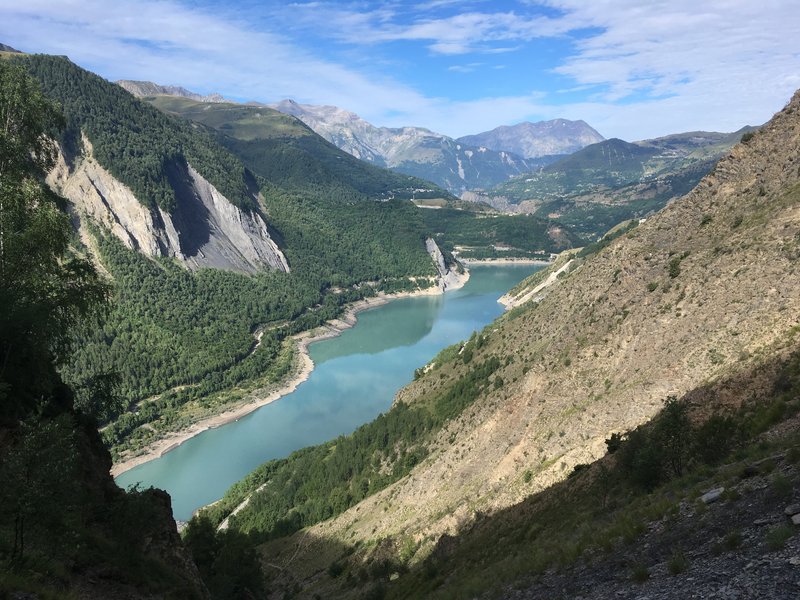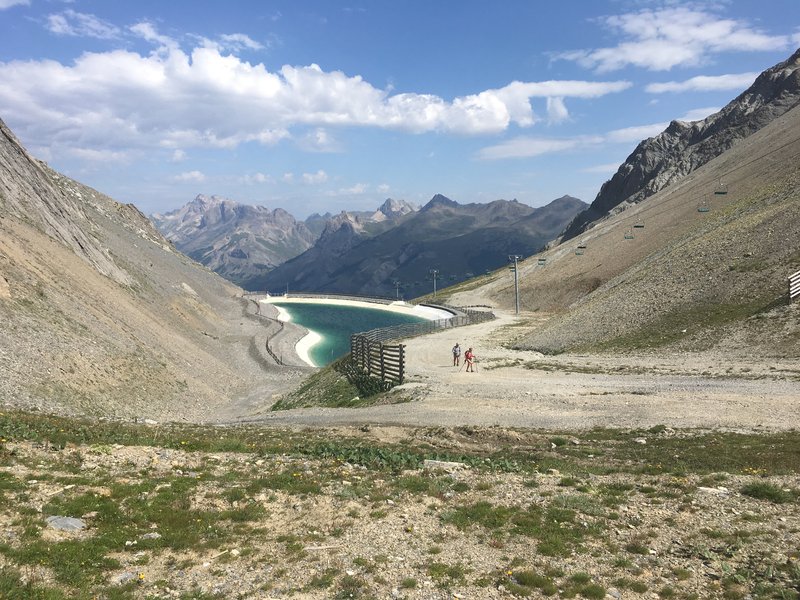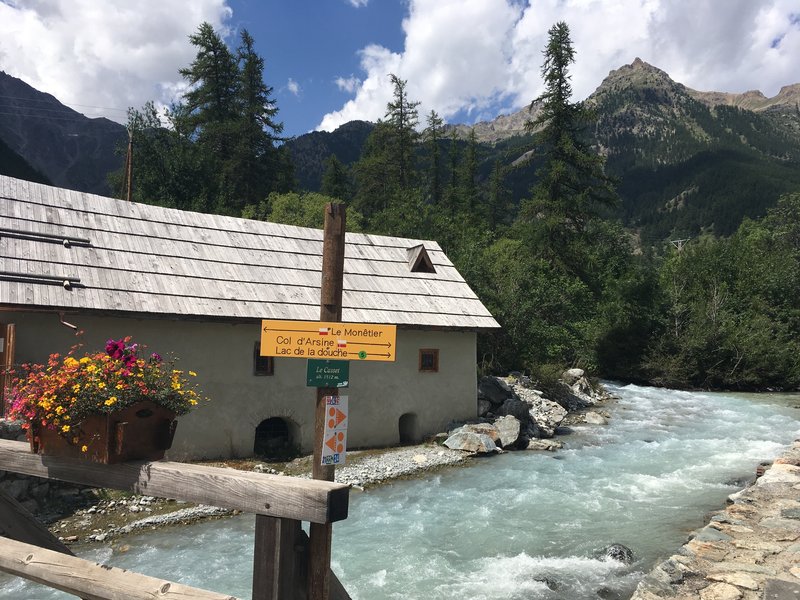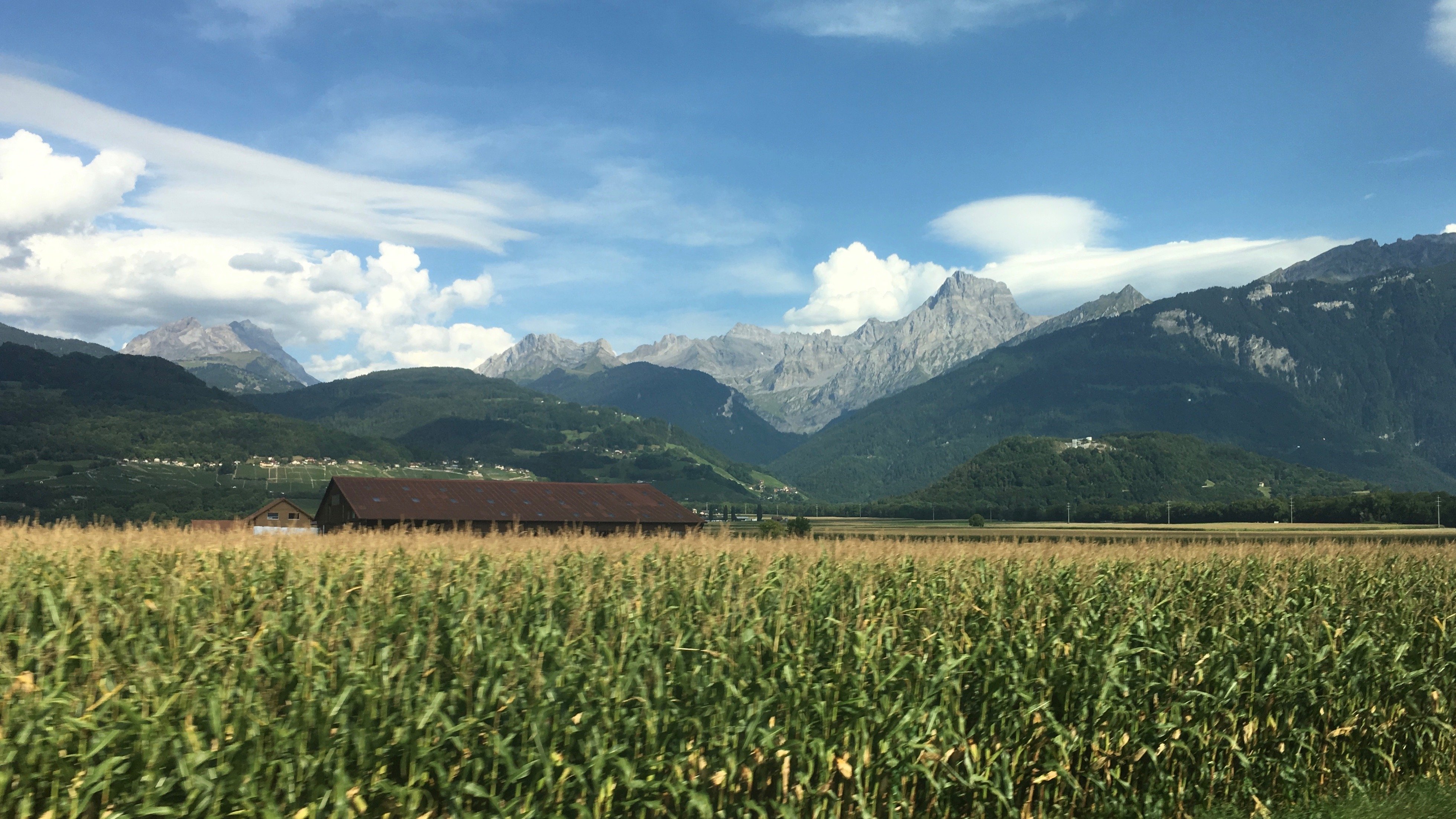Darren Axe discusses the challenges and uncertainties facing the environment and industries of the European Alps, in the face of climate change.
It is commonly assumed that an ‘Alp’ is a towering pinnacle of rock and ice, dominating the landscape of the mountain range that derives its name from the word. The reality however is far less dramatic, and paints a picture of a tamer landscape. An ‘Alp’, or ‘Alpe’ (in French) refers to the term Alpage; a high-altitude summer grazing pasture or meadow. These lush meadows form a key part of the long-standing seasonal and cyclical pattern of transhumance where cattle and sheep are moved by their shepherds from their overwinter home of the lowland valleys up into the mountains in spring and summer and back down again in autumn. The Alps are thus a mountain range fashioned by human activity as well as the forces of nature if not least in literary but also physical form. Indeed, this is the most populous and accessible mountain range on Earth.
The surge in interest in winter sport was fuelled by a period of reliable and increasingly snowy winters in the Alpine region between the 1930’s and 1980’s. However, from the 1980’s through to the present day, alpine winter snowfall has become much more unpredictable in nature.
The story of the Alps is told by ongoing human adaption to the background pulse of climatic change, whether between the seasons or over the years, decades and centuries. Agro-pastoralism and woodcraft form the basis of the age-old Alpine heritage, but a wide range of human activities have since been layered onto this. The Victorian era sparked the beginning of European tourism and the mountains of the Alps provided pioneering ground for new leisure time pursuits and the intrepid sports of mountaineering (Alpinism) and skiing. Whilst the mountains continue to prove their worth through the multi-billion Euro Alpine tourism industry, their value extends well beyond their geographical limits. The fertile arable plains of the Rhône valley from Lyon through to the Mediterranean as well as surrounding hillside vineyards depend ultimately on the continuous supply of water flowing from the high mountains. A network of pipes, canals and reservoirs, the product of intuitive human engineering of upland water basins has enabled the development of an alpine hydropower infrastructure with a combined output of 28 GW (Ref. 1: CIPRA).

Lac du Chambon, département d'Isère, France, July 2017 seen from the GR50. The surface of the reservoir is around 20 m lower than normal with a large exposure of gravel bank around the shore. Summer 2017 was preceded by a critically dry winter and spring - the hydrological 'recharge period' (Ref: 5 Meteo France).
Travelling by train along the Rhône valley either in the Swiss section before it enters Lake Geneva or racing down the French section by TGV section further south, the scale of industry and development are immense. It’s easy to forget the critical role that these mountains play in Western Europe’s prosperity. But in the light of the current pace of climatic change in the Alps as discussed recently in The Changing Face of the Alpine Environment, how resilient are our human activities in the face of uncertain change?
It is widely expected that under climate warming, the Alpine region will become more susceptible to drought.
The critical and most challenging factor is the level of uncertainty in climatic patterns that modern-day climate change has brought. The general warming of average annual temperature is punctuated with extreme weather events of varying duration; short, intensive rainfall or prolonged, extreme heat and drought being two of the most problematic. Arguably, mountain agriculture could benefit from the warming trend (Ref 2: Behringer et al, 2000). Earlier snowmelt and a longer growing season will certainly improve grazing conditions and crop yield in an environment where agriculture was traditionally seen as a harsh battle against the elements. During times of extreme heat, cooler and higher alpine valleys could even provide more favourable conditions for crops and animals than the parched plains below. Meanwhile, on the surrounding pistes de ski, the snow cannon has become a universal feature of the ski-infrastructure landscape in all but the highest ski areas. The post-war period brought about a boom in alpine winter tourism. Climatically, the surge in interest in winter sport was fuelled by a period of reliable and increasingly snowy winters in the Alpine region between the 1930’s and 1980’s. However, from the 1980’s through to the present day, alpine winter snowfall has become much more unpredictable in nature (Ref 3: Laternser and Schneebeli, 2003). The 2017 winter was no exception, many ski areas lay largely snow free for much of December and January, with February and March providing relief with snowfall events. The winter came and went rapidly, with a long, dry spring taking hold from early April onwards. As for lower-altitude ski fields; those in the pre-Alpine ranges such as the Jura; artificial snow production is somewhat impossible if winter temperatures struggle to reach 0ºC and with precipitation increasingly falling as rain, any ‘whitening’ progress is simply washed away by the next passing weather front. The viability of winter sports in these regions is balanced on thin-ice.

Ski field engineering. This small reservoir near the Col de l'Eychauda on the GR54 feeds a system of snow cannons for the Serre-Chevalier ski area. The landscape-scale impact of ski infrastructure clearly dominates the high-summer view here. Snow cannons are a response to unreliable winter snowfall and have become almost ubiquitous at European resorts. Water storage and distribution is a key challenge, as well as the ecological impacts of 'artificial snow’.
The Alps are Central Europe’s reservoir, with millions of litres of freshwater locked up in snow and ice supplemented by the network of engineered structures and pipelines. As the glaciers shrink, the reliability of the reservoir is challenged. The impacts downstream are far-reaching and possibly present one of the largest challenges of climate unpredictability for the 21st century. The Rhône valley and Provence hillsides are one of Europe’s largest vineyards, and the fertile plains are heavily cultivated with fruit, vegetable and salad crops. Reductions in natural water availability will place further pressure on the engineered water resource for piped irrigation. This ultimately relies on water storage capacity in reservoirs that rely on being topped-up by spring snow-melt. Building more storage capacity might seem like a logical response but how many more alpine valleys are willing to succumb to submersion behind a wall of intrusive concrete?
The Alps are going through immense change, to a warmer period of climate with greater extremes of wet and dry. This is changing the physical and human landscape and necessitating adaptation of land use and human activity.

La Guisane passing through Le Casset, Hautes-Alpes. Water everywhere? Gushing torrents loaded with glacial sediment are a classic feature of the Alpine landscape. However, extended dry spells and near-drought combined with increasing demands for freshwater are putting the natural hydological system under immense strain.
Adding to the reductions in snow-melt input to the hydrological system is the effect of prolonged drought. The complexity of variables contributing to future climate trends make it difficult to identify whether overall precipitation will decrease, and there will always be wide-ranging spatial and altitudinal variability. However, it is widely expected that under climate warming, the Alpine region will become more susceptible to drought (Ref 4: Gobiet et al., 2014). Precipitation patterns and extreme heat in the French Alps over recent summers have produced clearly visible evidence of change in the landscape. Glaciers stripped bare of any surface snow layer and Alpine lakes and reservoirs at low levels. July 2015 saw a period of daytime temperatures sustained in the mid-thirties creating significant rockfall hazard in the high-mountains as a result of permafrost melt. Once again in 2016, the heat returned and the Meteo France recorded a 25% rainfall deficit during the summer months. As for summer 2017, whilst the summer received around average rainfall, a significantly dry preceding autumn, winter and spring (the so-called re-charge period) has left Mediterranean soils in particular with drought-like conditions (Ref 5: Meteo France).
Whilst the exact trajectory of future climate is unclear, some things are certain. The Alps are going through immense change, to a warmer period of climate with greater extremes of wet and dry. This is changing the physical and human landscape and necessitating adaptation of land use and human activity. Our responsibility is to attempt to exist harmoniously in the landscape in the face of unpredictability. This presents an immense challenge for a world with increasing resource and mobility demands. The climate challenge of this century will arguably test our tradition of resilience more than our innovation, and the mountain environment is where resilience forms a critical part of survival.
References:
1. International Commission for the Protection of the Alps (CIPRA); Energy in the Alps; accessed 12/09/2017; <http://alpsknowhow.cipra.org/background_topics/alps_and_energy/alps_and_energy_introduction.html>
2. Behringer, J. Buerki, R. and Fuhrer, J. (2000) Participatory integrated assessment of adaption to climate change in Alpine tourism and mountain agriculture, Integrated Assessment; 1, pp.331-338.
3. Laternser, M. and Schneebeli. M. (2003) Long Term Snow Climate Trends of the Swiss Alps (1931-99), International Journal of Climatology, 23, pp.733-750.
4. Gobiet, A. Kotlarski, S. Beniston, M. Heinrich, G. Rajczac, J. Stoffel, M. (2014) 21st century climate change in the European Alps - A review. Science of the Total Environment, 393, pp. 1138-1151.
5. Meteo France; Sécheresse : situation au 24 août 2017; accessed 20/09/2017; <http://www.meteofrance.fr/actualites/53165018-secheresse-situation-au-24-aout-2017>.
